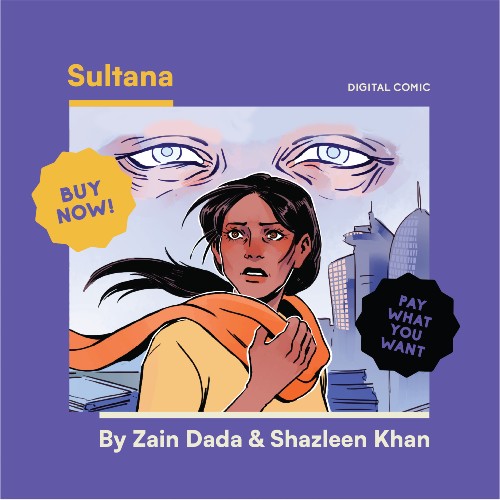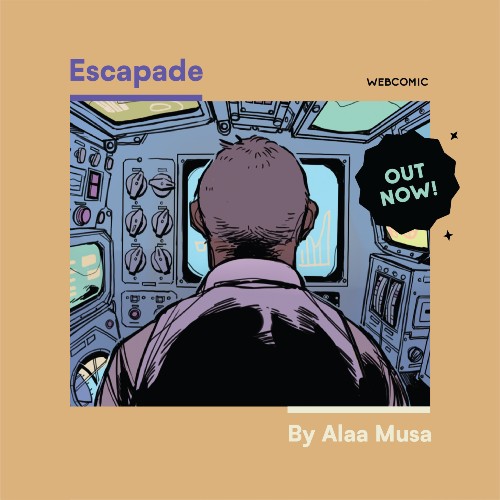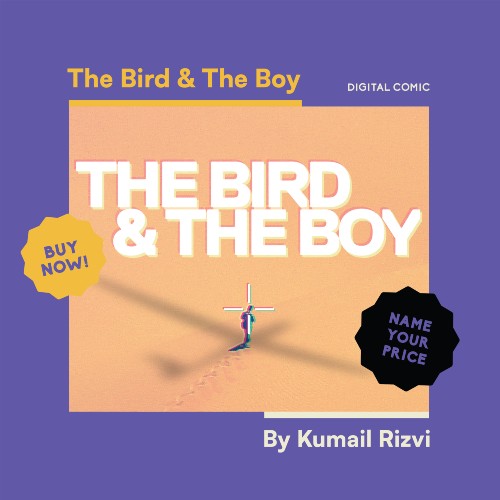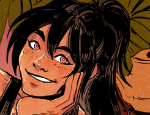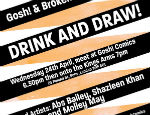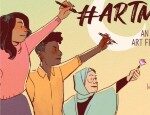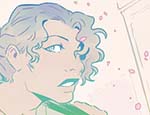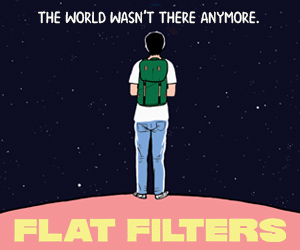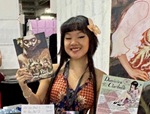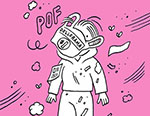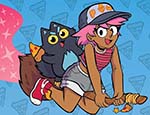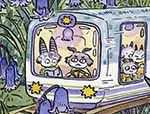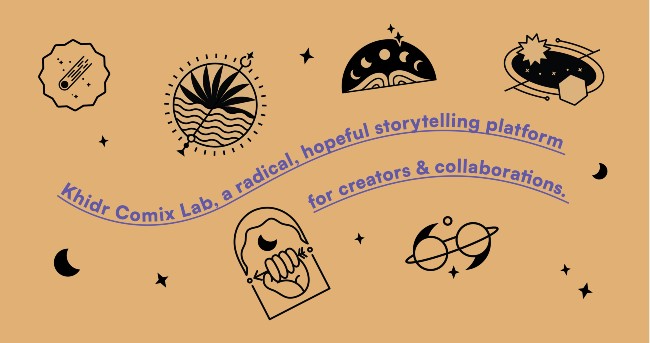
Launching today, Khidr Comix Lab is a new micropublishing venture seeking to provide a platform for Black, Brown and Muslim storytellers. Having had an advance look at some of the comics they have coming up we’re very excited at BF at the mix of established names on the UK indie and zine scene like Shazleen Khan, Ramzee and Sofia Niazi, alongside newer emerging voices ready to be discovered by wider audiences. We caught up with Khidr Comix Lab publishers Zain Dada and Kumail Rizvi about their ethos, the story behind Khidr’s formation, and what projects we can expect to see from them as we come into 2021…
ANDY OLIVER: Before we start talking about Khidr Comix Lab can you introduce yourselves to the Broken Frontier audience and give us some background information on your own work and areas of practice?
ZAIN DADA: My name is Zain Dada, I work as a cultural producer in my day job and moonlight as a playwright. My background is a random mixture of producing, youth work, research and d.i.y cultural projects. I’m interested in “histories which have remained in a cultural embargo” to quote the poet Jay Bernard. Coming from a theatre background, I have an acute awareness of what an independent, subsidised theatre sector can do for writers, as an incubating hub and pipeline. That was formative in our thinking behind Khidr Comix Lab, how can comic-writers and artists find a space to take risks and create new stories, what spaces exist for that to happen.
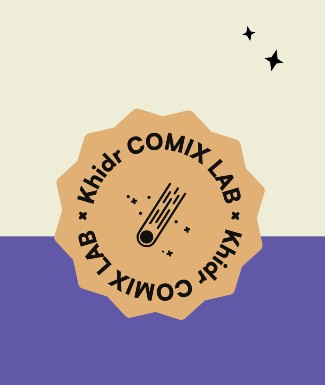 KUMAIL RIZVI: I’m Kumail Rizvi, I’m an illustrator and write comics, and just completed my MA in Architecture. You might know some of my previous comics, like Kahlil, a story of a Superman that landed in Karachi instead of Kansas, as well as The Common Wealth, a story maybe best described as an anti-colonial Ocean’s Eleven, which I’m contributing to Claire Napier’s Bun & Tea magazine. My own interests as a storyteller, which tend to focus on Pakistani characters or culture, tend to find its way into my architectural practice too, my last projects focusing on South Asian ideas of domesticity and privacy, as well as the effects of Drone Warfare/Surveillance in Pakistan and the Middle East.
KUMAIL RIZVI: I’m Kumail Rizvi, I’m an illustrator and write comics, and just completed my MA in Architecture. You might know some of my previous comics, like Kahlil, a story of a Superman that landed in Karachi instead of Kansas, as well as The Common Wealth, a story maybe best described as an anti-colonial Ocean’s Eleven, which I’m contributing to Claire Napier’s Bun & Tea magazine. My own interests as a storyteller, which tend to focus on Pakistani characters or culture, tend to find its way into my architectural practice too, my last projects focusing on South Asian ideas of domesticity and privacy, as well as the effects of Drone Warfare/Surveillance in Pakistan and the Middle East.
AO: Khidr Comix Lab exists to provide a platform the work of Black, Brown and Muslim storytellers. Can you tell us about its origins and your publishing philosophy?
ZD: In a lot of ways our publishing philosophy is inspired by Khidr Collective, a multidisciplinary collective which produce an annual journal-zine platforming the work of Muslim artists. Kumail and I first started working together through Khidr Collective by creating a satirical comic strip for each issue. A lot of our thinking aligned around ‘who gets to do satire’ and ‘who is afforded the space to imagine.’ After a few years of collaborating together, we decided to start Khidr Comix Lab because we recognised the scope to put that thinking into practice.
KR: When Zain came to me with the idea for KCL, the thing that struck me was that, when I (doom)scroll through Twitter, I find that there are hundreds, if not many more, fantastic Muslim artists, and yet comparatively few comics made by Muslims, or about them. Maybe that’s a function of the algorithm and I’m simply not seeing it, but it seemed that way to me. I want there to be many more stories about and by these kinds of storytellers, certainly more than I can count on my hands.
AO: How will your comics be distributed? What will be your method of delivery?
ZD: I think this goes back to the idea of building-in sustainability. Selling digital comix at a minimum price with a ‘pay-what-you-like’ feature enables a prospective community of supporters to invest in Khidr Comix Lab as well as the artists. Having said that, there will always be free and accessible web comix to read online too.
In the web comix section, we’ve split them up into Khidr Cartoons and Stories of the ether. Khidr Cartoons will be short form satirical comix whereas Stories of the ether will be slightly longer & story focused (like Alaa Musa’s Escapade).
KR: We definitely took inspiration from places like Panel Syndicate, Quarantine Comics, and I mean, even things like Bandcamp, have shown that pay-what-you-like can be something that works. Also, the idea of affordable comics, is one I can really can get behind.
AO: One of your first comics will be Sultana, a collaboration illustrated by Broken Frontier Award-winning artist Shazleen Khan. What’s the premise of Sultana? And for those unfamiliar with Shazleen’s exquisite visuals how would you describe the qualities she brings to the comics page?
ZD: Sultana is a story about young migrant women working in the (fictional) Royal Kingdom of Meshan in the palaces of the Royals family. In this short comic, Sultana is caught up in a constitutional crisis as the King of Meshan is dying with no heir. It is most obviously a story of late capitalism and the determination that millions of people have to live a life with no dignity because of it.
Shazleen illustrated the comic and it was such a joy to work with her. In our process of working together, she really interrogated how the art might correlate with the heart of the story. Shazleen came up with the idea of ‘eyes’ being particularly relevant to the art-work, both in being watched by the state but also in what we give away as humans. What does it mean if the eyes are the windows to the soul but some people in power are soulless?
AO: In terms of subject matter what can we expect to see from Khidr Comix Lab’s comics as 2021 progresses?
ZD: Sudanese comic artist, Alaa Musa’s comic, Escapade which is free to read on the Khidr Comix Lab’s website is about a future where a cheeky tea break is a luxury. In lots of ways that dystopia exists now. That particular web comic was funded by the Dream Fund and we’re really inspired by their thinking around “bold, creative and regenerative dreams.” We also love this idea of ‘visionary fiction’ coined by American writer, Walidah Imarisha which is about writing alternative futures: fiction for social change.
By the same token, we don’t want to narrow the scope of the subject matter for Khidr Comix Lab, a big part of what we hope to do, is to give artists and writers the freedom to create the work they want to.
KR: The Bird & The Boy, is a comic I produced for my Masters programme this year, based on the reporting of Jeremy Scahill, it tells the true story of the targeted killing via drone, of a 16-year-old US citizen, Abdulrahman Al-Awlaki, the process by which that was allowed to happen, and the (lack of) effect it had on the future of the drone apparatus. It’s not a fun story, but I think, maybe one people should know more about.
AO: Your initial list of artists includes names like Sofia Niazi and Ramzee who BF readers will be familiar with alongside some that may be new to them. Who are some of the creative voices we can look forward to seeing under the Khidr Comix Lab banner in the months to come and what will they be bringing to your publishing line-up?
ZD: There are an incredible roster of artists and writers we want to work with. One of the most exciting ideas Kumail and I have discussed is getting writers from different mediums (playwrights, screenwriters and such) and pairing them with artists we admire.
AO: Will you be accepting submissions and, if so, what are the guidelines for potential artists?
KR: We will definitely be accepting pitches, which all the details will be up on the website when it’s live, including guidelines for what we’ll be looking for but broadly speaking, we don’t have rules about wanting or not wanting certain genres, I think looking to what we’ve published on the KCL website, and imagining if your work can fit into that oeuvre, may be a good start? Importantly, whether what you pitch is historic non-fiction or speculative fiction, I think the work should speak from the under-represented perspectives that KCL is determined to highlight.
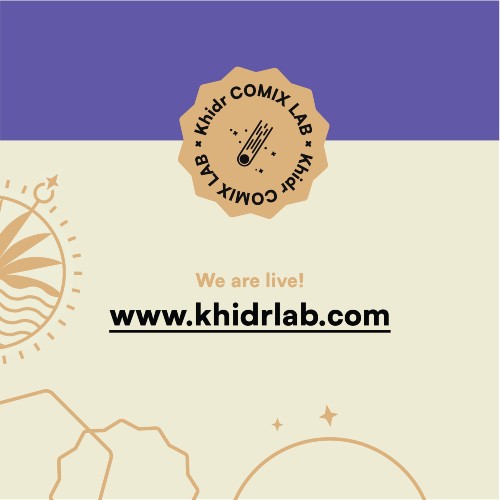
AO: And, finally, where can readers looking to find out more about your publishing schedule and upcoming books find you online?
ZD: I think this really feeds into the ‘lab’ element of Khidr Comix Lab, which means a lot of projects will be experiments. We have some exciting collaborations coming up with the Tower Hamlets Archive Library as well as the prospect of an international collaboration with a women of colour comix collective in Paris.
KR: Khidr Comix Lab can be found at khidrlab.com, on Twitter and Instagram @khidrlab too. You can probably find Zain and I there as well.





